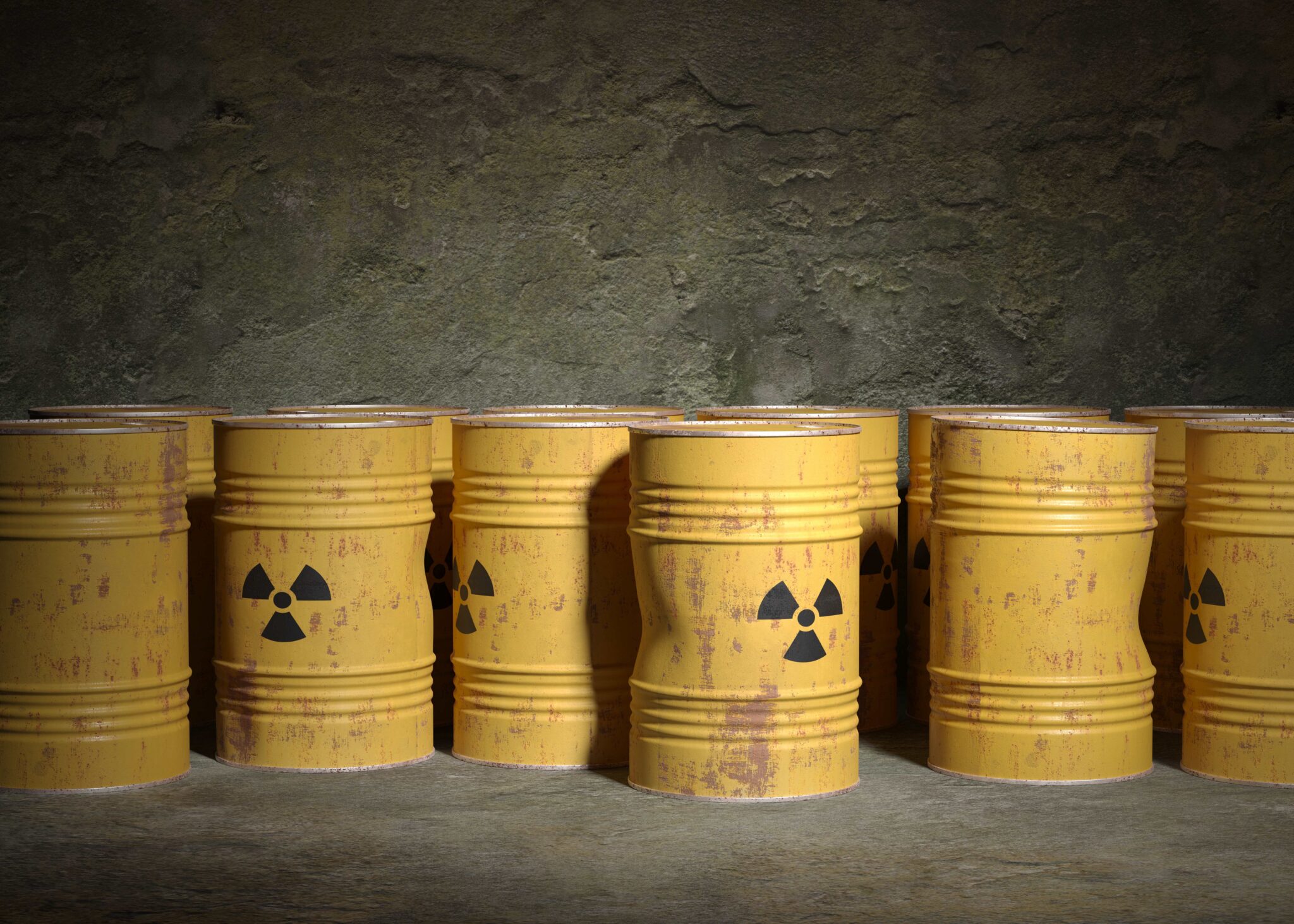„In Poland, the first radioactive waste will appear in 2050, but preparations for the construction of a landfill should already begin,” says Paweł Gajda, PhD. from the AGH University of Kraków in an inerview with BiznesAlert.pl.
In the coming years, there will be a significant increase in the capacity of RES in Poland, but it will be the atom that will be the foundation of the future energy mix. Poland has ambitious plans in this respect– two large power plants and a third one on the table and numerous SMRs, but the issue of radioactive waste storage is not mentioned, and this, unfortunately, is one of the biggest drawbacks of nuclear power.
BiznesAlert.pl: Where and how Poland will store radioactive waste? Is waste recycling taken into account?
Paweł Gajda: The recycling of spent nuclear fuel is being discussed, but a final decision has not yet been made. The question of how to deal with high-level waste, that is, spent nuclear fuel, is still open, various scenarios are being considered.
It is also worth remembering that spent nuclear fuel, which will be ready for storage or recycling, will appear in 2050 at the earliest. So we still have a lot of time to choose the method of treatment and proper preparation.
Regardless of the chosen method, such waste will require the construction of the so-called deep geological storage. This site in Poland has not yet been selected, but preliminary work is underway to identify several preliminary locations where further geological research can be carried out. As I have already mentioned, the first spent fuel from the reactor that could end up in such a landfill is 30 years away. If we recycle that deadline is even further away. In addition, spent fuel can be stored in surface storage, and in many countries it is stored this way while waiting for a decision on whether it will be recycled or disposed of. Therefore, when it comes to building the landfill there is still plenty of time left and it makes sense to consider different options.
Low – and medium-level waste is a different issue. We already have such waste in Poland, it comes from medical, scientific and industrial activities.
When nuclear energy appears, more such waste will be generated and, of course, a new facility for its storage will have to be built. Moreover, its construction would be necessary even without nuclear power, due to the gradual filling of the landfill in Różan, in the Masovian Voivodeship .
In the case of low – and medium-level waste, work on the selection of the next facility is at an advanced stage, and its construction should begin in the perspective of this decade.
Should Poland build its own landfills or consider exporting to other countries?
Across the world, it is rather accepted that each country independently builds its own landfills.
What is the cost of such a facility?
For example, the cost of building a landfill in Onkalo in Finland was less than 4 billion euros. This facility is intended to store all high-level waste from the Finnish nuclear power industry.
In the most realistic scenarios, Poland will need a similar size of landfill. The exact cost can vary depending on various local factors, for example, geological background, but this example can show what order of amounts we are talking about.
According to a study by Stanford University, SMRs will generate four times more waste than large-scale facilities due to innovative design solutions. How would you comment on these reports?
Such reports have appeared before, sometimes giving even higher numbers. And I would approach them with great care. First of all, it all depends on what kind of SMR we are talking about. There are dozens of SMRs designs, they are based on different technologies, have very different capacities. And even for one model of the rector, the amount of waste generated may depend on the solutions that the operator will apply, how this power plant will work, whether it will be used as baseload or during peak shaving, what fuel will be used and how severely it will be spent. There are many factors.
The fact is that in the case of SMRs, we can expect a little more waste. In the case of spent fuel, some difference may result from the lower efficiency of such a block. But we are talking about a single percentage, not a multiple difference. A slightly larger difference may occur for low-and medium-active waste, since in terms of the same power and the amount of energy produced in SMRs, a larger number of structural elements that can be activated by neutrons will be needed.
There is probably an SMR design that would produce four times as much waste as a large reactor. But for those SMRs that may emerge in the foreseeable future, this difference will be significantly smaller.
Orlen wants to build a small atom in Poland based on the BWRX-300 reactor. Is there any data on the amount of waste generated by this model?
This SMR’s capacity is relatively high. As for the spent fuel, here the difference will be minimal. In terms of capacity, there will be slightly more reactor building materials that can be activated. But if we add all this, the amount of waste produced can be higher by several percent than in the case of large power plants. This is certainly not a difference that would be a decisive factor in the choice of this or that technology.
Interview by Jacek Perzyński









